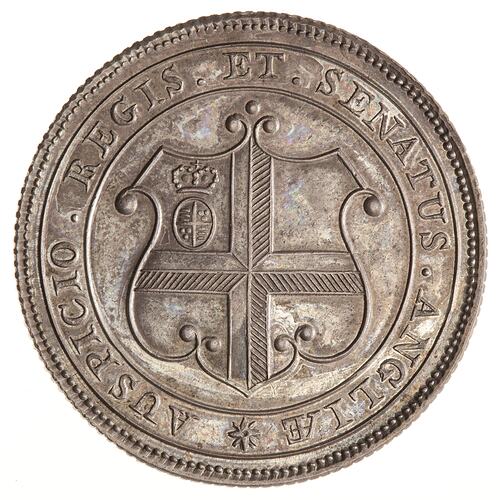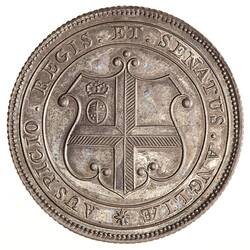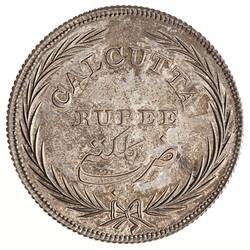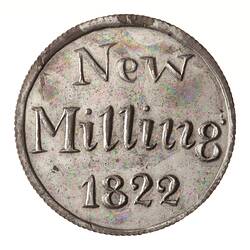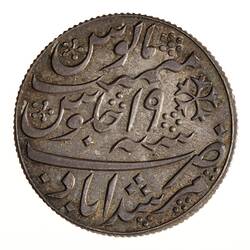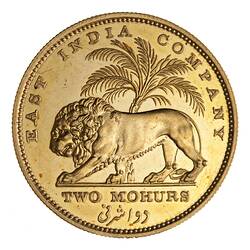Summary
Pattern for 1 Rupee, proposed for Bengal, India, 1818
Minted by Calcutta
Obverse Description
At centre within a plain circle the shield of arms of the East India Company; around, * AUSPICIO REGIS ET SENATUS ANGLIAE (Translation: Under the auspices of the king and senate of England)
Reverse Description
Within an open palm wreath, CALCUTTA / RUPEE / Persian legend (Zarb Kalkatta - translation: Struck at Calcutta)
Edge Description
Milled (vertical)
Significance
As a move towards the unification of the currencies of British India, the Bengal Presidency increased the weight of it's 19 san rupee in August 1819. This pattern reflects ideas first put forward in 1806 that the EIC arms should appear on its coins. The weight of the piece is that of the pre-reform rupee of 1819 and it is believed to be a pattern for a new design to mark the weight increase as well as a test of the new vertical edge milling. In the event, the old design with new edge milling was proceeded with but an extra star was added to the obverse design to mark the increased weight. This pattern is unusual in that the name of the mint is given in Persian as well as the rupee being called a Calcutta rupee. Calcutta coins tended to be standardised issues giving other mint town names: Farrukhabad, Murshidabad etc.
Reference
Pridmore, Fred. "An East India Company Pattern Rupee of the Bengal Presidency" Seaby's Coin and Medal Bulletin, April, 1961 p.145
More Information
-
Collection Names
-
Collecting Areas
-
Acquisition Information
Donation from (Estate of) Mr Erich Wodak, John Gartner
-
Date Issued
1818 AD
-
Issued By
-
Mint
-
Denomination
-
Series
-
Material
Silver
-
Axis
12
-
Classification
-
Category
-
Discipline
-
Type of item
-
Dimensions
28.7 mm (Outside Diameter), 12.395 g (Weight)
-
Shape
Round
-
References
Pridmore 361 KM#Pn26
[Book] Bruce, Colin R. 2006. Standard Catalogue of World Coins 1801 - 1900.
[Book] Pridmore, Fred. 1975. The Coins of the British Commonwealth of Nations, Part 4, India. 1., Vol.1 p. 263-4 Pages
-
Keywords
